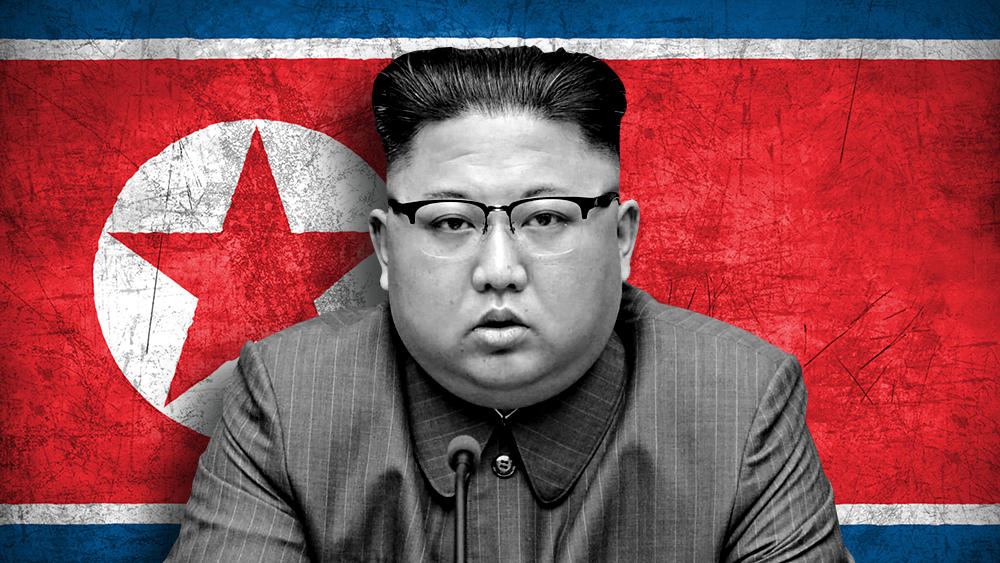Chinese military says it just achieved “huge breakthrough” in laser weapon technology
08/15/2023 / By Ethan Huff

Scientists in communist China are bragging that they have come up with a new breakthrough in laser weapon technology that will allow the country’s military to operate high-energy lasers “infinitely” without any excess build-up of heat waste.
Experts from the National University of Defence Technology, located in China’s Hunan province, say the new cooling system for high-energy lasers eliminates all of the harmful heat that is otherwise generated during their use. Too much heat continues to be a major challenge in laser weapon development all around the world.
Thanks to the new technology, the People’s Liberation Army (PLA) will have the ability to blast laser beams for as long as needed, without any interruption of degradation in their performance.
“This is a huge breakthrough in improving the performance of high-energy laser systems,” said Yuan Shengfu, the team lead on the project that developed the new technology, which is outlined in a new study published in the Chinese-language, peer-reviewed journal Acta Optica Sinica.
“High-quality beams can be produced not only in the first second, but also maintained indefinitely.”
(Related: Back in February, the Chinese military used special lasers to blind Philippine Coast Guard ship crews during a confrontation, even though this action was a “clear violation” of the sovereignty of the Philippines.)
Is communist China preparing to blast the U.S. and other enemies with high-powered lasers?
Replete with advanced structures and optimized gas flow, the new cooling system is able to capture and remove heat from inside the laser weapon, all while creating minimal turbulence and vibration and improving mirror cleanliness.
This is quite the feat, for those with a cursory understanding of such things. In essence, the Chinese have come up with a way to internally cool laser weapons without shaking or moving them and losing a target – and they can shoot these super-cooled lasers for a theoretical eternity, or until the target is destroyed.
According to the South China Morning Post, a state-run media outlet, the new breakthrough technology has the potential to “significantly change the face of battle by extending engagement times, increasing range and damage, and reducing logistics and costs.”
“Since the invention of the first ruby laser in 1960, people have been enthusiastic about transitioning from kinetic energy to laser energy for the rapid projection of energy at the speed of light, dreaming of laser beams to become ‘death rays’ that can instantly kill targets,” Yuan and his colleagues said.
“Unfortunately, 60 years have passed and while various types of lasers have been developed, the application of high-energy laser systems has not been successful.”
The United States has been working on new high-powered laser technologies as well, but has apparently not kept up on the cooling front to the degree that communist China has. Such U.S.-based laser projects include:
- The Navy Advanced Chemical Laser (NACL), which uses deuterium fluoride as a laser source
- The Middle Infrared Advanced Chemical Laser (MIRACL), which uses advanced mid-infrared chemical lasers
- The Tactical High Energy Laser (THEL)
- The Space-Based Laser (SBL), which uses hydrogen fluoride as a laser source
- The Airborne Laser (ABL), which uses chemical oxygen iodine as a laser source
In test fields, the MIRACL laser has successfully shot down supersonic missiles, while the THEL laser has successfully shot down 48 flying targets. The ABL laser, meanwhile, has successfully intercepted liquid fuel missiles.
All of these projects were canceled, though, the stated public reason being that all of the lasers are too large and too heavy to feasibly use in combat.
“The true reason for the cancellation of these projects was that their destructive power did not meet expectations,” claim the Chinese, who are probably right, adding that the destructive power of a beam requires “longer continuous operation,” which is what the new cooling technology accomplishes.
The latest news about the goings on in communist China can be found at CommunistChina.news.
Sources for this article include:
Submit a correction >>
Tagged Under:
big government, breakthrough, Censored Science, China, communist China, discoveries, future science, future tech, high-energy lasers, innovations, inventions, laser weapon technology, military, military tech, national security, National University of Defence Technology, research, weapons tech
This article may contain statements that reflect the opinion of the author
RECENT NEWS & ARTICLES
COPYRIGHT © 2017 WEAPONSTECHNOLOGY.NEWS


















